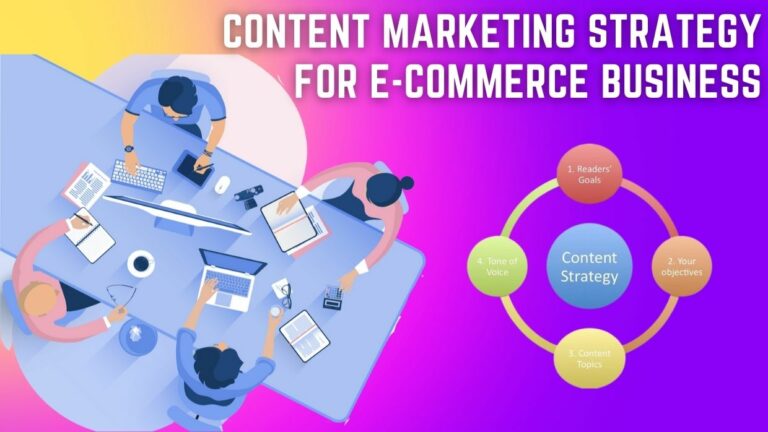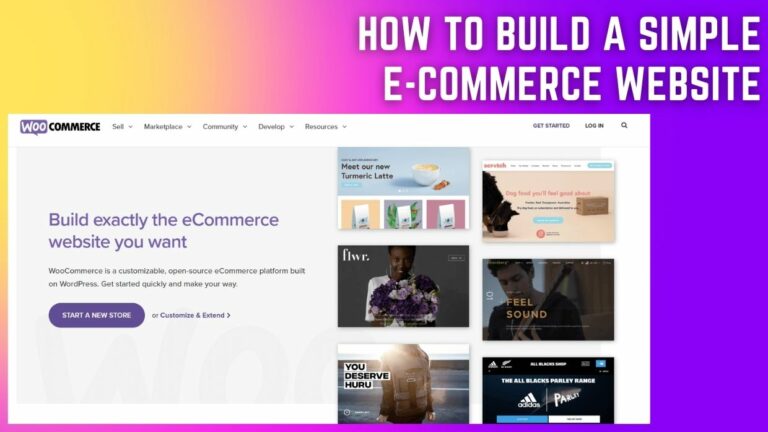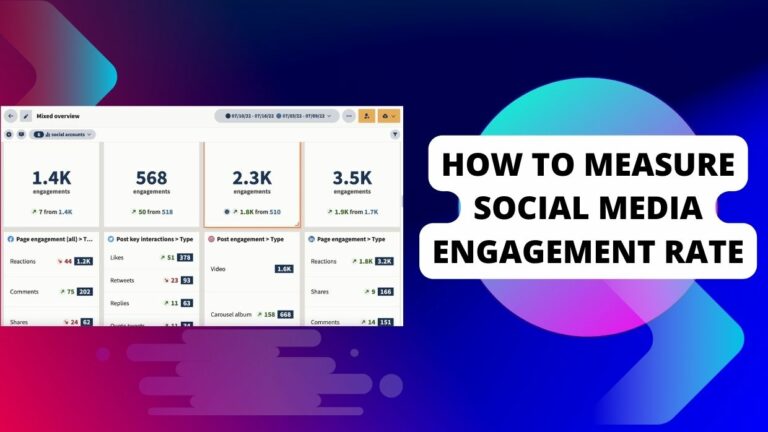How To Start E-commerce Business Without Inventory
Are you tired of the traditional brick-and-mortar business model? Do you dream of starting your own e-commerce business but don’t want to deal with the hassle and expense of stocking inventory? Well, we have good news for you! In today’s digital age, it is possible to start an e-commerce business without any physical inventory.
Yes, you read that right – no need to spend money on buying products upfront or worrying about storage and shipping logistics. In this blog post, we will share some practical tips and strategies on how to get started with your very own inventory-free e-commerce venture. So buckle up and get ready to learn how to turn your entrepreneurial dreams into reality!
Overview of e-commerce
E-commerce is the buying and selling of goods and services online. It has become increasingly popular over the last few years as technology has become more accessible and people have become more comfortable shopping online.
There are a few things you need to know before you start an e-commerce business without inventory. The first is that you will need to find a niche market to sell to. This can be done by researching online or talking to people in your target market. Once you have a niche, you will need to find products to sell that people in your niche would want to buy.
You can do this by finding wholesalers or manufacturers who offer Dropshipping. Dropshipping is when you sell a product but the supplier ships it directly to the customer. This is a great way to start an e-commerce business without having to carry any inventory yourself.
Read more… Your Step-By-Step Guide To E-commerce
The Benefits of Starting an E-commerce Business Without Inventory

There are many benefits to starting an e-commerce business without inventory. One of the biggest benefits is that you don’t have to worry about storing or managing inventory. This can save you a lot of time and money. Additionally, not having to worry about inventory can help you keep your focus on other aspects of your business, such as marketing and customer service.
Another benefit of starting an e-commerce business without inventory is that you can get started quickly and cheaply. Often, all you need to get started is a domain name and a website builder. This means that you can get your business up and running with very little upfront investment.
Finally, starting an e-commerce business without inventory gives you the flexibility to change your product offerings as your business grows. If you find that certain products are selling well, you can add them to your inventory. On the other hand, if you find that other products are not selling as well as you’d hoped, you can simply stop carrying them. This flexibility allows you to experiment with different products and offerings without incurring the cost or hassle of managing physical inventory.
Read more… Unlocking The Benefits Of E-Commerce
How to Start an E-commerce Business Without Inventory
There are a few different ways that you can start an e-commerce business without inventory. The first way is to create a digital product, such as an eBook or an online course. This is a great option if you have expertise in a particular area and can offer valuable information to your customers.
Another way to start an e-commerce business without inventory is to Dropship products. This means that you sell products that are shipped directly from the supplier to the customer, so you don’t need to hold any inventory yourself. This can be a great option if you’re just starting out, as it’s low risk and doesn’t require a large upfront investment.
Finally, you could also start an e-commerce business by offering services instead of products. This could include anything from web design and development to SEO and social media marketing. If you have skills or experience in a particular service area, this could be a great option for starting your own business.
What You Need to Know Before Starting an E-Commerce Business Without Inventory
If you’re thinking about starting an e-commerce business, but don’t want to deal with the hassle of inventory, there are a few things you should know. First, it’s important to understand that an e-commerce business without inventory is essentially a service business. This means that your focus will be on providing a service or product to customers, rather than on stocking and selling products.
This doesn’t mean that you can’t sell products through your e-commerce business – you can! However, it does mean that you’ll need to find other ways to source the products you sell. This could include dropshipping (ordering products from a wholesaler or manufacturer and having them shipped directly to your customers), or working with manufacturers or suppliers who offer consignment arrangements (where they provide inventory on consignment and only bill you for items that are sold).
either way, it’s important to have a good understanding of the products you’re selling, as well as the market for those products. You’ll also need to make sure that your pricing is competitive, and that you have a good system in place for taking orders and fulfilling them promptly.
Of course, running an e-commerce business without inventory comes with its own set of challenges – but if you’re up for the challenge, it can be a great way to get started in the world of online businesses!
Learn more… E-Commerce Business Models: Which One Is Right For Your Store?
Choosing the Right Platform and Tools for Your E-Commerce Store
There are a few key things to consider when choosing the platform and tools for your e-commerce store. The first is what type of products you’ll be selling. If you’re selling physical goods, you’ll need a platform that can handle inventory management and shipping integrations. If you’re selling digital products, you’ll need a platform that can handle file delivery and security.
Another key consideration is your budget. There are many high-quality e-commerce platforms and tools available, but they can vary greatly in price. If you’re just starting out, it’s important to choose something that is affordable but still has all the features and functionality you need.
Finally, take into account your own technical expertise and comfort level. Some platforms and tools are easier to use than others. If you’re not comfortable with technology, it might be worth paying for a platform or tool that is user-friendly and easy to navigate.
Developing Your Website: Design, Content, and SEO
Your website is the foundation of your e-commerce business. It’s where you showcase your products, provide information about your business, and drive traffic that converts into sales.
To create a successful website, you need to focus on three key elements: design, content, and SEO.
- Design: The design of your website should be professional and user-friendly. A well-designed website will help you build trust with your visitors and make it easy for them to find the information they’re looking for.
- Content: Content is key to any successful website. You need to create content that is both informative and engaging. Make sure to provide details about your products, services, and company story.
- SEO: SEO stands for search engine optimization—this is the process of optimizing your website so it appears higher in search engine results pages (SERPs). To do this, you’ll need to use relevant keywords throughout your content and create backlinks from other websites.
By focusing on these three elements, you can create a successful website that will help boost your online business.
The 3 Core Pillars Of A Successful E-Commerce Business
Setting Up Payment Processing
There are a few different ways to set up payment processing for your e-commerce business. The most common methods are through a third-party processor like PayPal or Stripe, or by setting up a merchant account with a bank.
If you’re just starting out, using a third-party processor is usually the simplest and most cost-effective option. You can sign up for an account and start accepting payments right away, without having to worry about setting up a merchant account or dealing with the extra fees that come with it.
However, if you’re doing a high volume of sales, you may want to consider setting up a merchant account. This will give you more control over your payments and allow you to process credit cards directly, which can save you money on transaction fees. Setting up a merchant account can be more complicated and expensive than using a third-party processor, but it may be worth it in the long run if you’re doing a lot of business online.
Promoting Your New E-Commerce Store
Assuming you have already built your e-commerce store, you will need to start promoting it if you want to make sales. There are many ways to promote your store, and the best approach depends on your target audience. You will need to experiment to find what works best for you, but some common methods include:
- Social media: Create profiles on popular social media sites and share links to your store. Use hashtags to reach a wider audience.
- Content marketing: Write blog posts, and create video content or infographics that highlight your products. Make sure to include links back to your store.
- Search engine optimization: Use keywords throughout your site so that people can find you when they search for relevant terms.
- Paid advertising: Invest in some paid ads on Google or social media. This can be an effective way to reach people who are already interested in what you’re selling.
Learn more… What are the features of e-commerce?
Conclusion
Starting an e-commerce business without inventory is a great way to get started as it eliminates the need for upfront costs and allows you to test the waters before investing more money. With access to drop shipping, digital products, affiliate marketing, and other services, there are plenty of options available for entrepreneurs looking to make a start in the world of e-commerce. By following these tips and using your creativity and drive, anyone can launch their own successful online store without ever having any physical product on hand. Best of luck!







